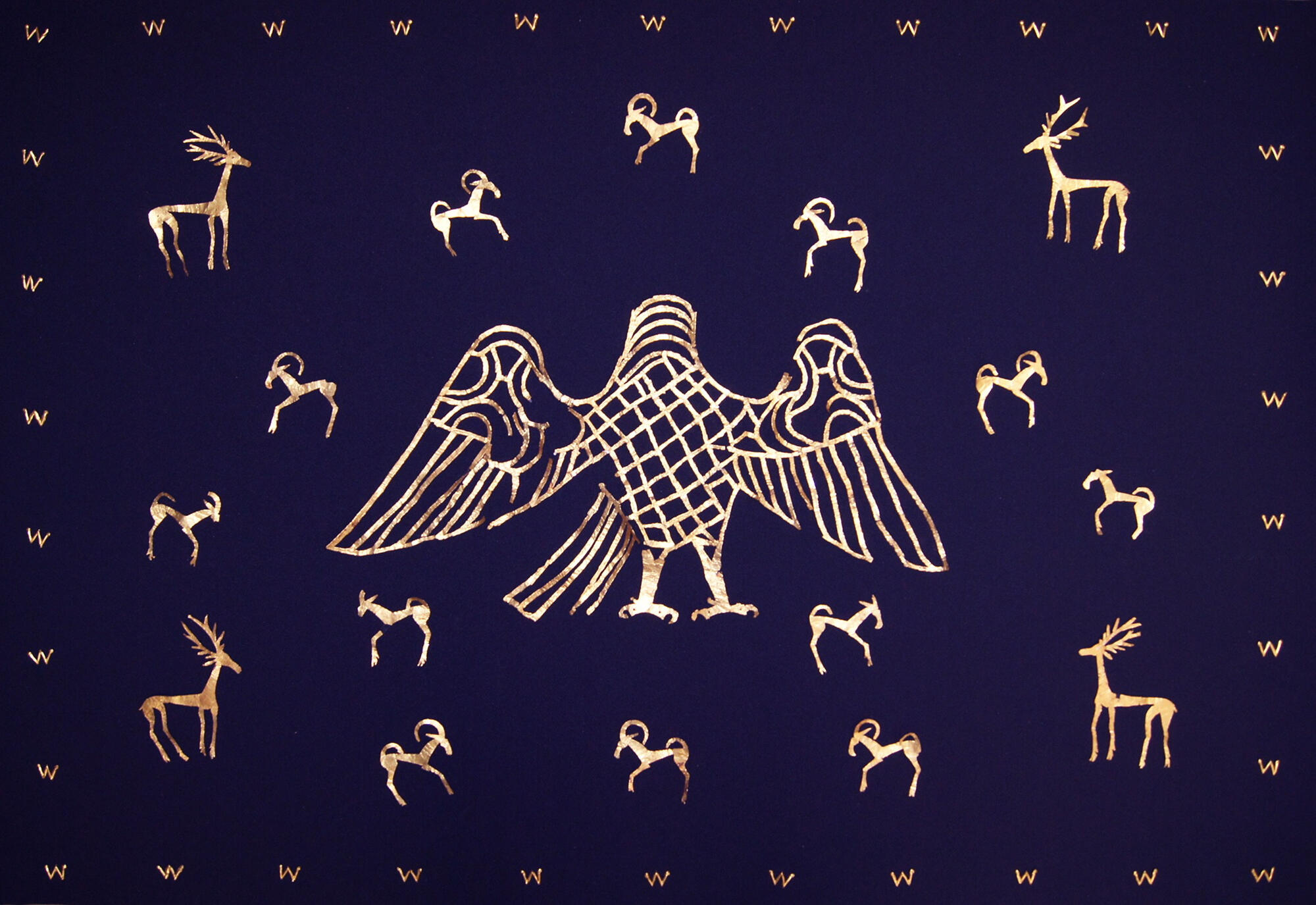In 2005, the Voronezh University expedition led by Ilya Evgenievich Safonov carried out security work in the mound, which is located on the southern outskirts of Lipetsk, near the village of Lenino. At that time, a burial of a Sarmatian woman of high social rank was discovered there.
The beginning of the construction of the mound dates back to the Middle Bronze Age — the middle of the 2nd millennium BC. Already at that time, it was at least three meters high. At the beginning of the first millennium A.D., a Sarmatian burial was made in the existing mound and it was enlarged. By the beginning of the excavations, its height was about 3.5 meters with a diameter of 40–45 meters.
As a result of research, archaeologists managed to establish that the burial was robbed twice. The first time happened back in antiquity, the second — in the 18th or 19th centuries. The little that was left in the grave after the robbers turned out to be quite enough to assess the cultural affiliation and high social rank of the burial.
The burial contained gold figurines of animals, a cast bronze ring with a figurine of a mountain goat, gray-clay and red-glazed jugs, bronze brooches, fragments of glass plates, gold rims from a wooden goblet, gold plaques and jewelry, a fragment of a silver vessel, pieces of blushers of two colors — crimson and pink.
The key find was the golden eagle — the royal bird, an ancient heraldic sign. The Sarmatians were ancient Iranians in terms of language and ethnicity. The golden eagle could be the incarnation of the deity Khvarno. The Sarmatians called it Khvarenah. This concept was also present in the worldview of the northern Iranian tribes. The widespread use of the stem in the names of Sarmatian kings and deities is well known: Arifarn, Saitaferne, and Uatafarn.
According to the ancient mythological ideas of the Iranians, Khvarenah was a symbol and material embodiment of power, a guarantee of good luck, fame, wealth, as well as a guarantor of the prosperity of the people and the stability of the state. For the kings, Khvarno (or Khvarenah) was a sign of being chosen by God and royal affiliation; for heroes — a guarantee of their glory and victory.
The beginning of the construction of the mound dates back to the Middle Bronze Age — the middle of the 2nd millennium BC. Already at that time, it was at least three meters high. At the beginning of the first millennium A.D., a Sarmatian burial was made in the existing mound and it was enlarged. By the beginning of the excavations, its height was about 3.5 meters with a diameter of 40–45 meters.
As a result of research, archaeologists managed to establish that the burial was robbed twice. The first time happened back in antiquity, the second — in the 18th or 19th centuries. The little that was left in the grave after the robbers turned out to be quite enough to assess the cultural affiliation and high social rank of the burial.
The burial contained gold figurines of animals, a cast bronze ring with a figurine of a mountain goat, gray-clay and red-glazed jugs, bronze brooches, fragments of glass plates, gold rims from a wooden goblet, gold plaques and jewelry, a fragment of a silver vessel, pieces of blushers of two colors — crimson and pink.
The key find was the golden eagle — the royal bird, an ancient heraldic sign. The Sarmatians were ancient Iranians in terms of language and ethnicity. The golden eagle could be the incarnation of the deity Khvarno. The Sarmatians called it Khvarenah. This concept was also present in the worldview of the northern Iranian tribes. The widespread use of the stem in the names of Sarmatian kings and deities is well known: Arifarn, Saitaferne, and Uatafarn.
According to the ancient mythological ideas of the Iranians, Khvarenah was a symbol and material embodiment of power, a guarantee of good luck, fame, wealth, as well as a guarantor of the prosperity of the people and the stability of the state. For the kings, Khvarno (or Khvarenah) was a sign of being chosen by God and royal affiliation; for heroes — a guarantee of their glory and victory.


